The Adam+ project is a modern reincarnation of the infamous Coleco Adam computer. With real hardware to run 8-bit emulator software, this device allows you to play your original COLECO &MSX cartridges. The project has just launched and is gaining traction as it is aimed to be an all-round 8-bit game machine supporting many old standards.
When the company Coleco announced their Coleco Adam computer, back in 1983, the idea was such a revolutionary one that competing manufactures were worried this device would dominate the console market. The Coleco Adam is a home computer and expansion device for the ColecoVision. It consists of a base console running on Z80 with a Motorola 6801 support CPU. It uses an external keyboard, has 2 game controllers, built-in cassette, digital storage, cartridge slots and a printer. It shipped with a bunch of software too. Like many home computers of its day, the Adam was intended to use a television set for its display. All of that for a price of a Commodore or MSX computer. For that time, this super computer was promising to take over and become a standard.
However, it failed to deliver due to increasing costs, manufacturing delays and bugs. World domination just flew out of the window. The Coleco Adam project eventually lead to the fall of Coleco. But just like the MSX system, Coleco's devices like the Vision and Adam still have a place in the hearts of today's many a retro enthusiastic. From that same scene comes the Adam+ initiative.
Belgium hard- and software maniac Danny Van den Heuvel initiated the recent Adam+ device project, promising interconnectable 8-bit retro computers on one hardware device. As Danny grew up with 8-bit machines like Amstrad, MSX, Commodore 64 and Coleco devices, his passion for such machines led to the idea of making a retro game PC console. Resulting in a multi homed emulator called Adam+, the spiritual follow-up to the original Coleco Adam.
The intention to create a universal system that can emulate many different systems with integrated hardware, is appealing as it also lets you insert original game cartridges. The Adam+ gets a dedicated interchangeable cartridge slot to support different cartridge formats. It is a complete hard & software emulation system, running MSX as well.
Adam+ is a real-life piece of hardware featuring a small form factor metal case design with SD cart slots, original DB9 joystick ports, USB and USB-C ports, connections for a real Adam keyboard and Adamnet. It has ethernet as well as HDMI connections and of course the interchangeable cartridge slots. This modern piece of technology runs on a small Linux Operating System providing a platform for emulation software. On the front of the enclosure a small oLED display with a thumbstick is present. All on a powerful single board with an 2.4GHz Intel CPU, UHD graphics cart, 32GB of storage and 4GB of RAM.
At the request of many enthusiasts, there will probably also be a campaign where you can buy a fully finished system. We'll keep you informed.

 dannyvandenheuvel
dannyvandenheuvel
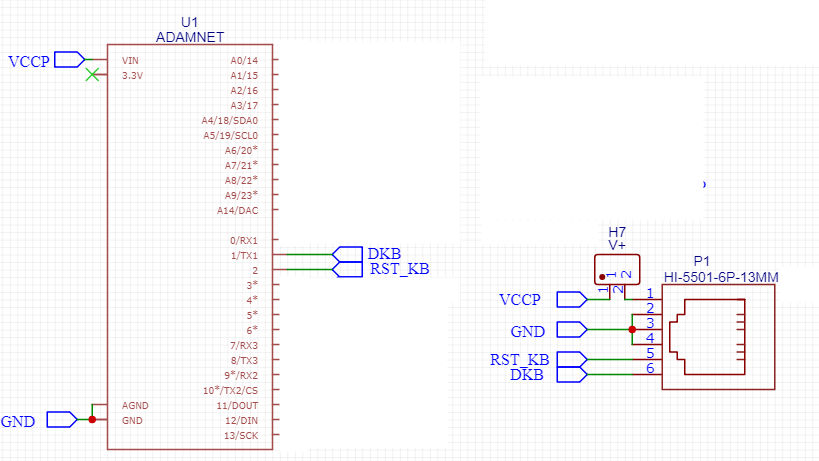
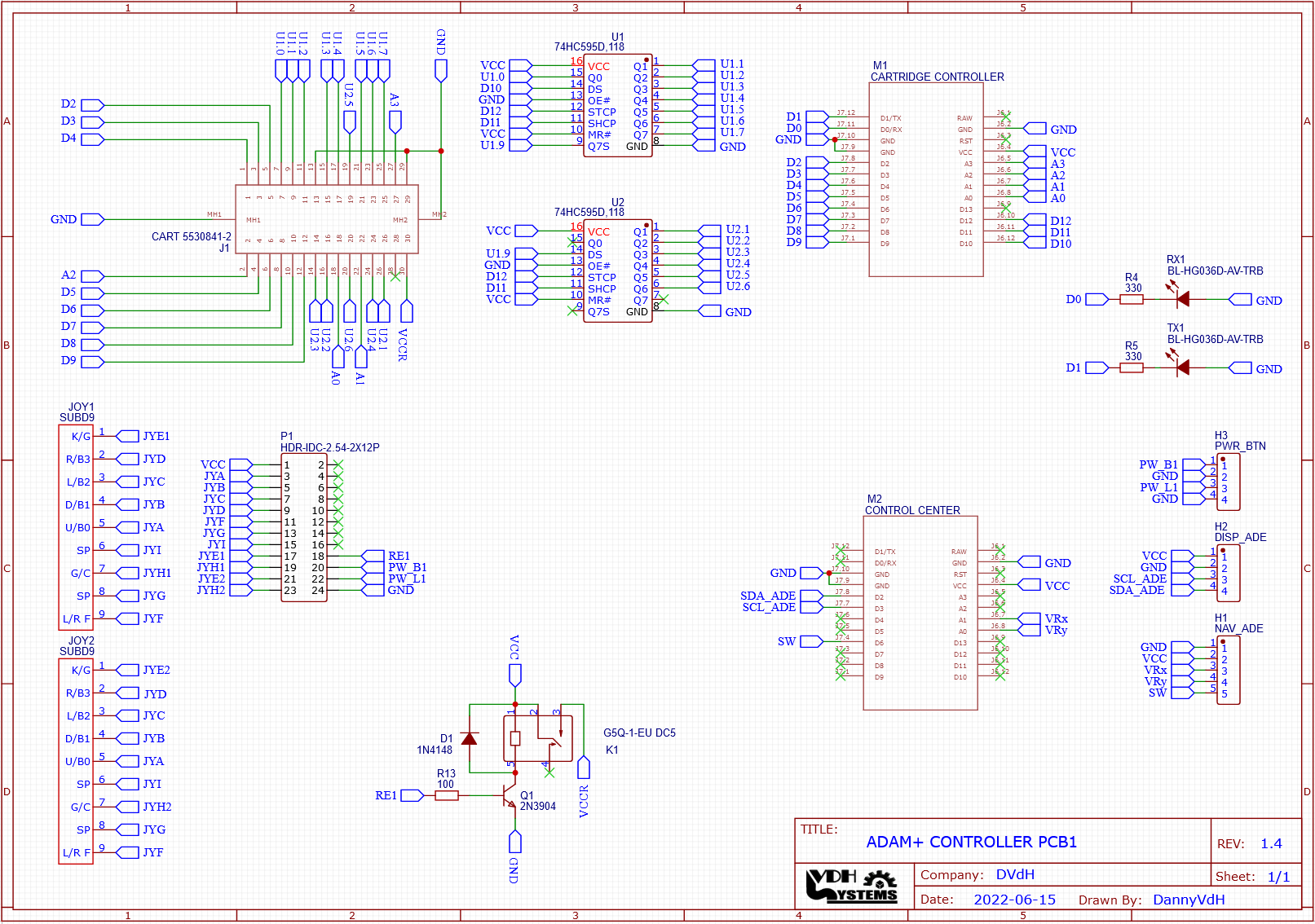
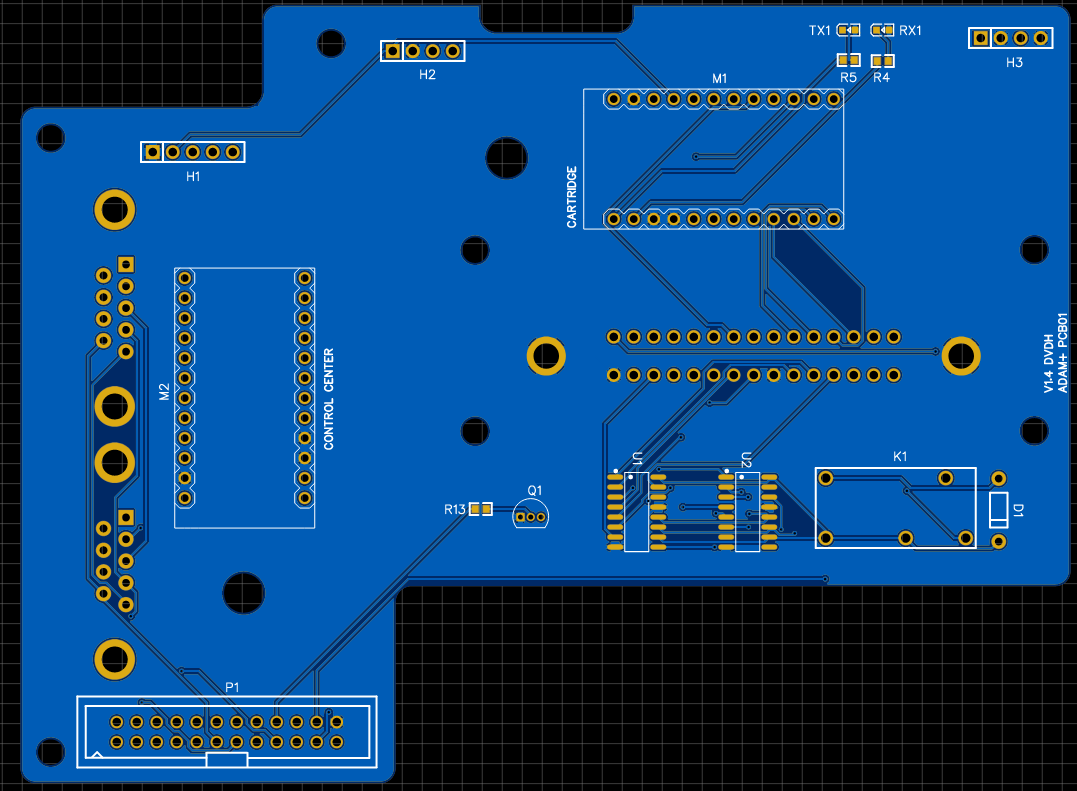
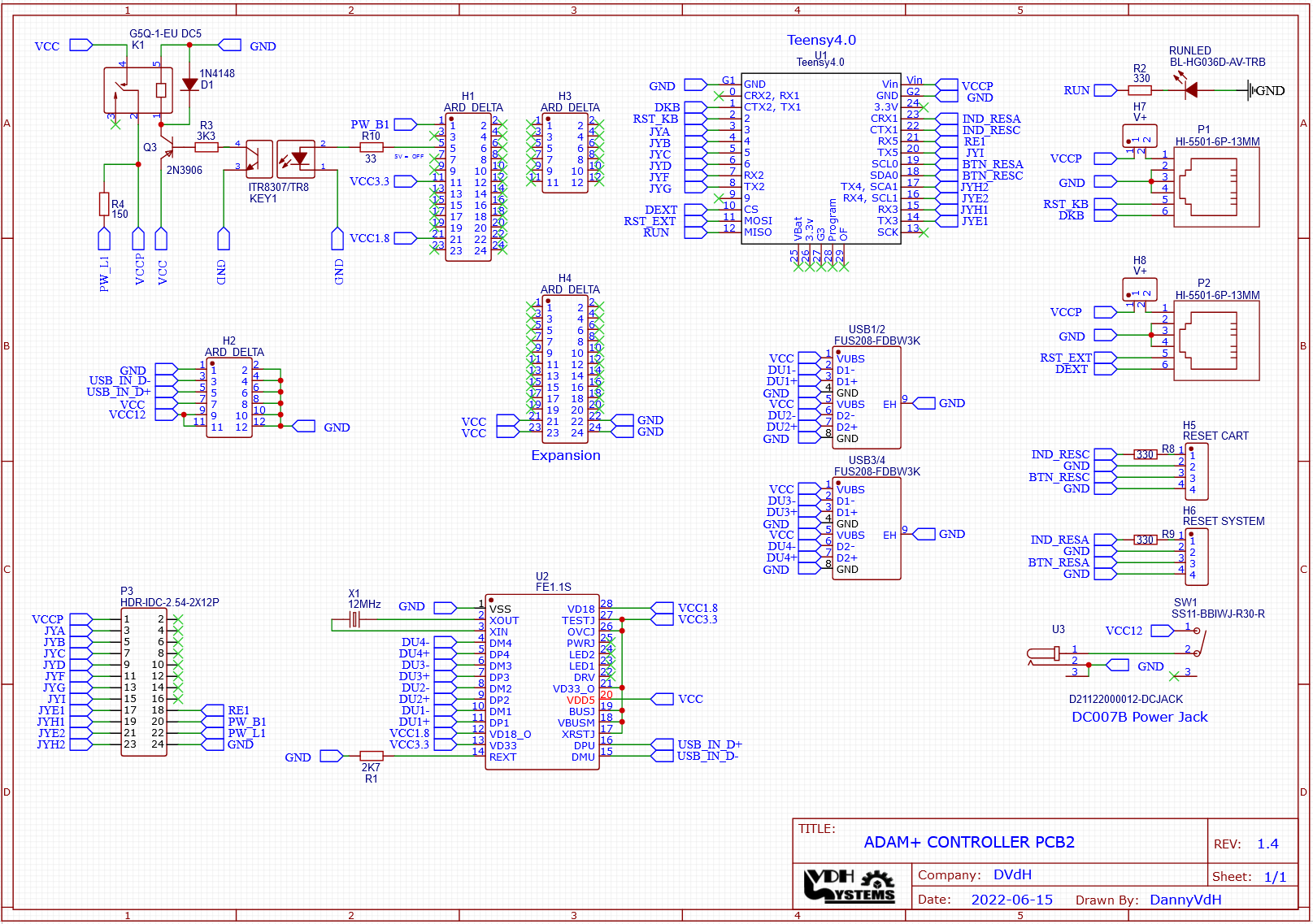
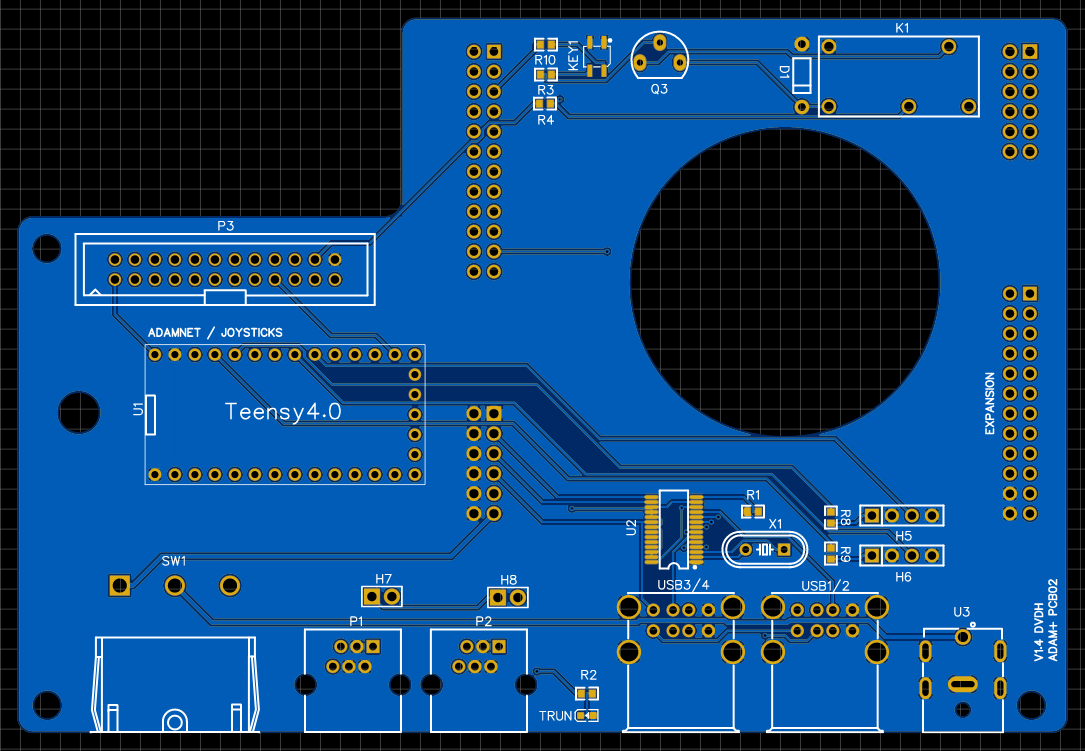
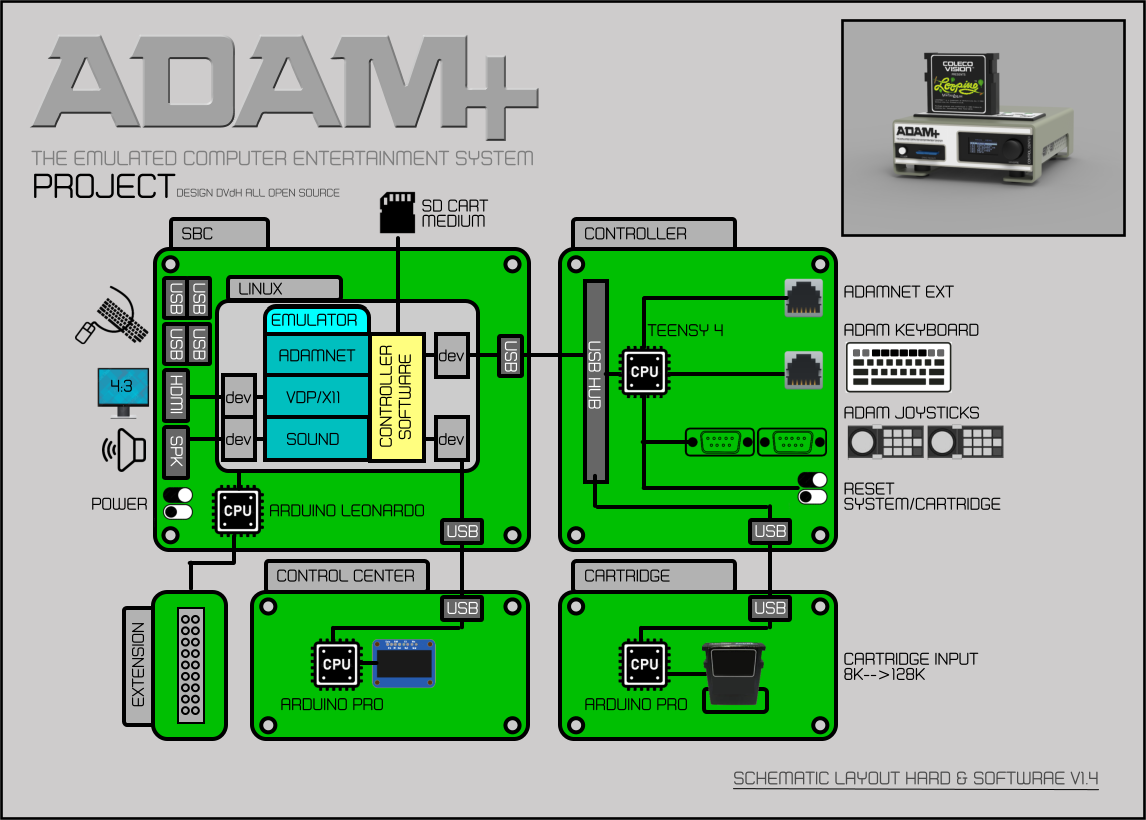 Schematic presentation of the ADAM+ system at this moment V1.4
Schematic presentation of the ADAM+ system at this moment V1.4
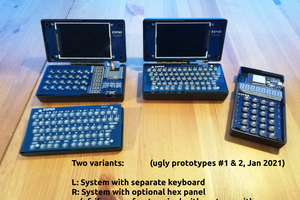
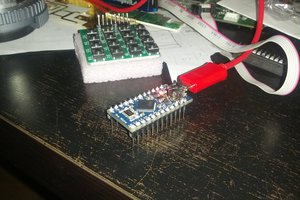
 Mootronic
Mootronic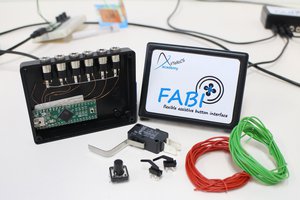
 benjaminaigner
benjaminaigner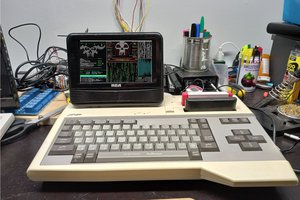
I've lost the source code, I will look into my archives if I find something back.